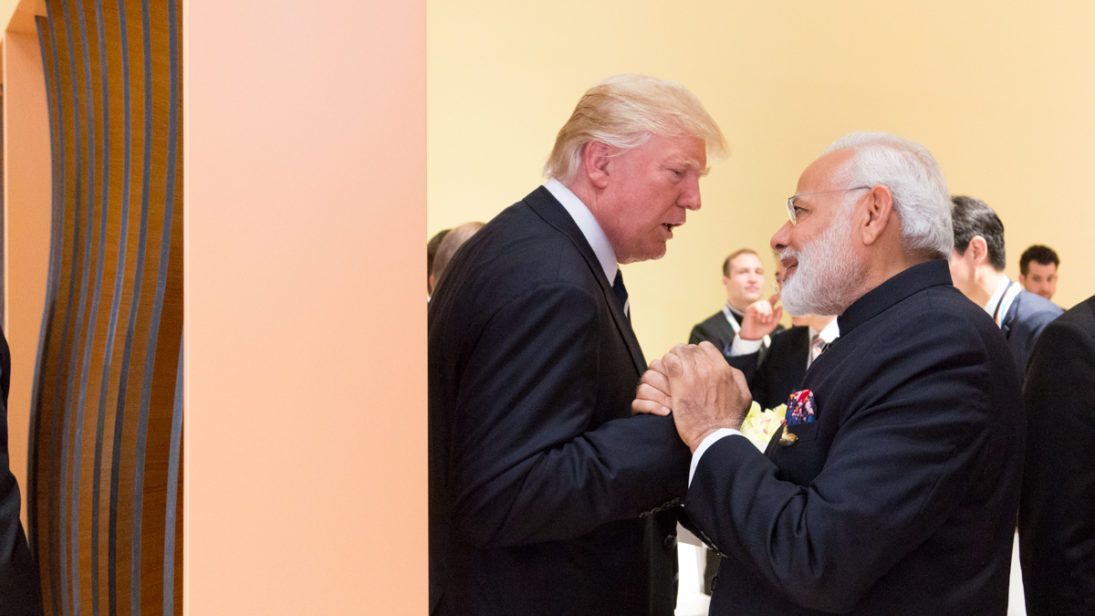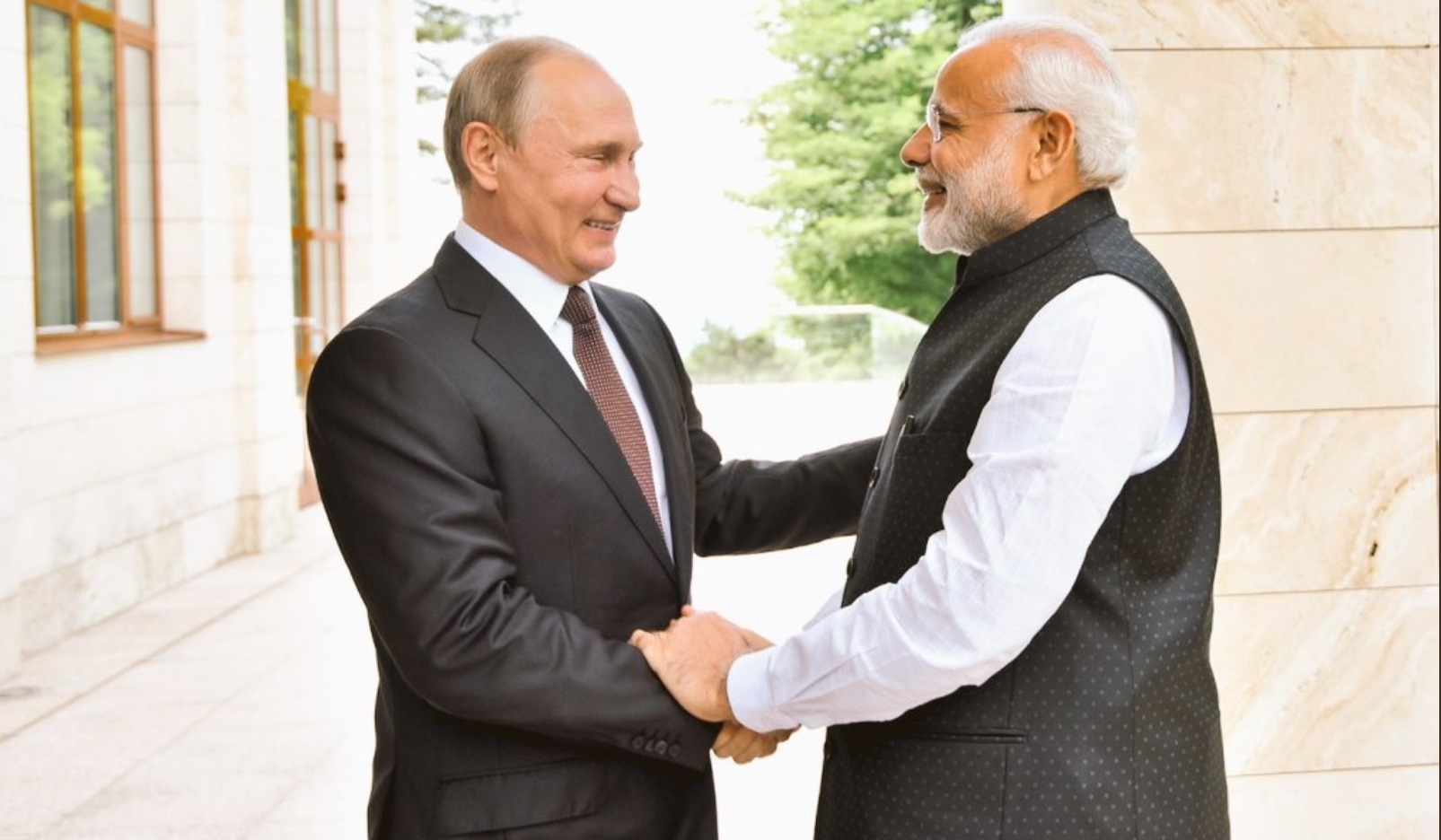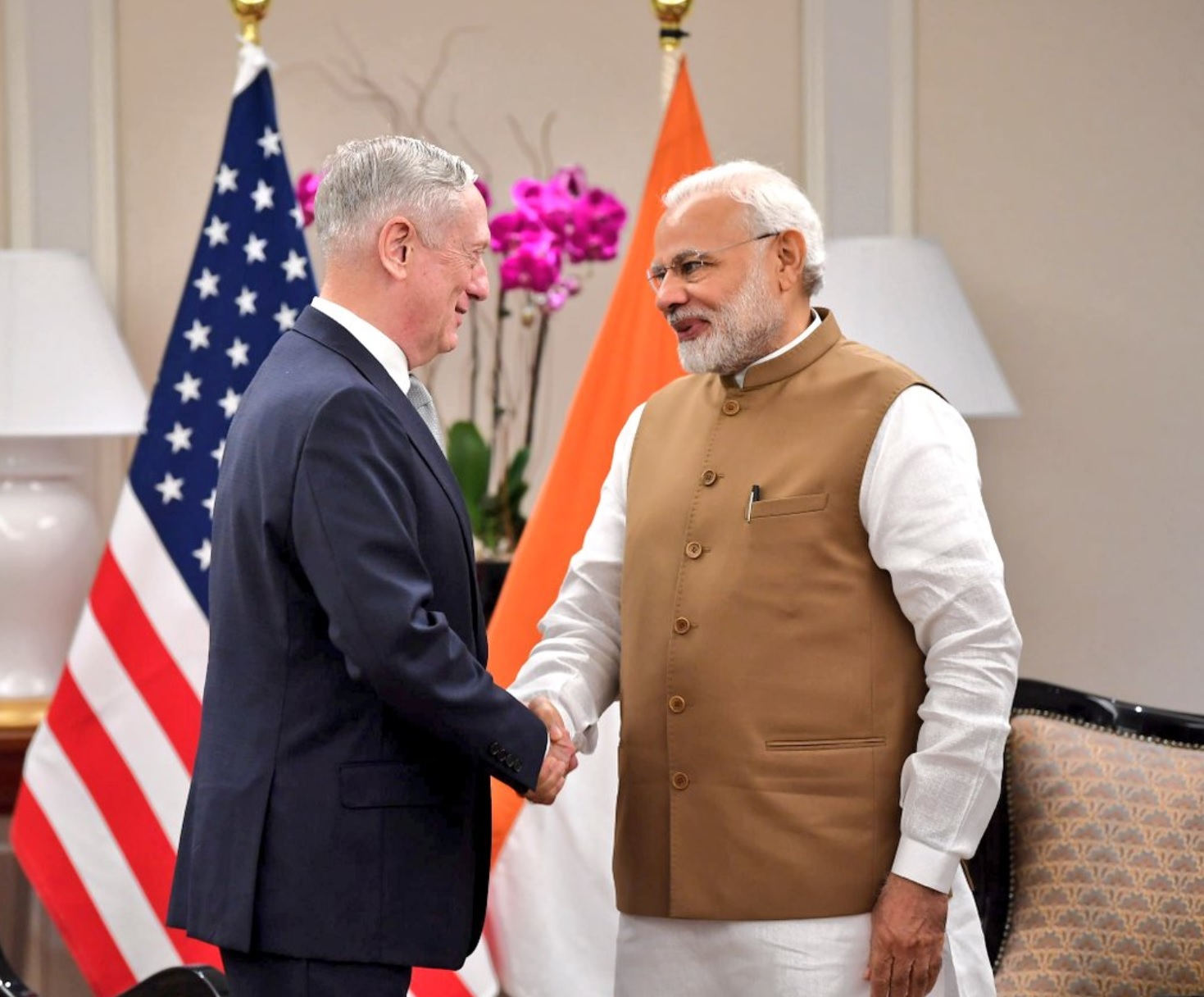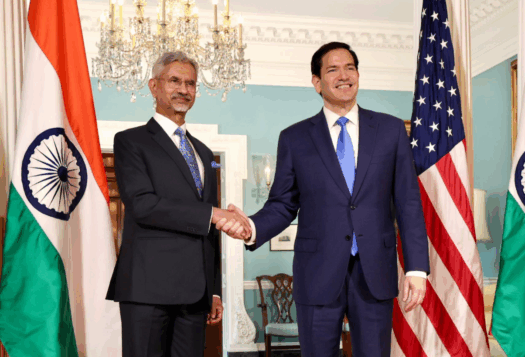
“The orchestra have sufficiently tuned their instruments, the baton has given the signal. And there is a new symphony in play.” It has been two years since Indian Prime Minister Narendra Modi proclaimed this during his famous address to the United States Congress. Prime Minister Modi’s speech signified that the bilateral relationship between India and the United States had entered a new phase, one that transcended political fluctuations in New Delhi and Washington. However, in recent weeks, the budding Indo-U.S. strategic partnership has been fraught by two factors: the re-introduction of sanctions on Iran in the aftermath of the U.S. withdrawal from the Joint Comprehensive Plan of Action (JCPOA), and the promulgation of the Countering America’s Adversaries Through Sanctions Act (CAATSA) by the U.S. Congress, which requires the Trump administration to sanction entities commercially involved with the Russian defense sector. While these U.S. decisions are not directly aimed at India, they still affect India’s foreign policy and strategic partnership vis-à-vis Russia and Iran. These sanctions bring back memories of a frosty Indo-U.S. relationship in the aftermath of India’s nuclear test in 1998, when Washington imposed economic sanctions on New Delhi.
While the continued delay in the 2+2 strategic dialogue cannot be construed as a setback, it is disappointing that such an important meeting is not receiving its due priority.
Interestingly, a 2+2 dialogue involving cabinet level officials from both sides originally scheduled for July 6, was intended to tackle these economic issues, institute a much-needed organized channel of communication between the two countries on strategic convergences, and more importantly, on their strategic divergences. However, the dates for the dialogue have been rescheduled for the second time, leading to questions about the fabric of the bilateral relationship between the two countries.
Coincidentally, on the same day that the 2+2 dialogue was rescheduled, U.S. Ambassador to the United Nations Nikki Haley was visiting New Delhi. In a public address during her visit, she attributed the delay in the dialogue to reasons unrelated to India, and reiterated Washington’s commitment to strategic relations with India. Therefore, even as a new date for the 2+2 is awaited, the importance of a strategic dialogue between the United States and India should not be minimized nor should the backdrop against which it may be held.
The Sanctions Conundrum
While these U.S. decisions are not directly aimed at India, they still affect India’s foreign policy and strategic partnership vis-à-vis Russia and Iran…At a time, when the United States is on a war footing with Tehran and Moscow, sanctions limit India’s maneuvering ability in its international relations.
For a while now, India and the United States have had fundamental differences on how to deal with Iran. As I have argued elsewhere, Iran, in more than one way, represents the incongruity between India and the United States on how the Indo-Pacific should be geographically defined. The U.S. withdrawal from the JCPOA and the reinstatement of sanctions threaten to deepen these fractures. The sanctions will directly impact New Delhi’s relationship with Tehran, especially in regards to its development of the Chabahar port. Chabahar is a trilateral venture involving the governments of India, Iran, and Afghanistan, and is expected to consolidate the economic linkages among the three countries, while simultaneously being a strategic rival to China’s port development in Gwadar, Pakistan. U.S. secondary sanctions would cripple the global credibility of major Indian companies currently transacting with Iran and restrict these companies’ ability to do business with the rest of the world. Moreover, given that Iran is India’s third-largest energy supplier, calls from Washington to cease oil imports from Tehran by November 4 puts the Indo-Iranian relationship in a tough spot. On one end, while India’s foreign minister made it clear last month that the Indian government has no plans to abide by these American sanctions, on the other hand, New Delhi has asked Indian oil firms to consider alternatives to Iranian crude. In her address in New Delhi, Ambassador Haley reiterated the U.S. position on Iran by equating the nation with North Korea and asserting that Iran deserves the most stringent sanctions. The 2+2 dialogue was supposed to be the venue for further consultation between the United States and India on such key issues, but this can now seems to have been kicked down the road.

In the same vein, U.S. sanctions on Russia threaten to derail India’s strategic relationship with Moscow. For a long time, India has relied on Russian-manufactured weapons for its defense forces and severing this well-enshrined partnership is not something New Delhi will easily accede to. Moscow has met Indian strategic demands time and again, and provided both high-end weapons platforms as well as routine ammunition and equipment to all three branches of the Indian armed forces. The Indo-Russian deal under the CAATSA scanner involves the S-400 anti-aircraft missile system that New Delhi is expected to procure from Moscow by the end of this year. Some top-level U.S. officials of the Trump administration have openly acknowledged India’s predicament in this matter and requested a waiver to exempt India from the brunt of sanctions. A waiver would have allowed New Delhi to procure the S-400 systems, without being subject to CAATSA sanctions. That request, however, has been denied by the U.S. Senate.
Strategic Merger
In recent years though, the United States-India strategic partnership has seen more ups than downs. The Obama administration designated India as a ‘Major Defense Partner’ in 2016 and was the first to float the idea of a 2+2 dialogue, though that was geared more towards diplomatic and economic issues. The shift in the format under the Trump administration, however, has brought about a new focus on strategic issues, indicating a warming of military relations, and a closeness on issues of defense and foreign policy.
COMCASA will allow Indo-U.S. interoperability and ease the sale of future weapons from the United States to India, thus elevating the Indo-U.S. strategic partnership by several notches.
The United States and India are about to finalize the establishment of the foundational military agreement called Communications Compatibility and Security Agreement COMCASA,which is meant to facilitate the delivery of communication equipment from the United States to India and bring India into the U.S. military communications structure. COMCASA will allow Indo-U.S. interoperability and ease the sale of future weapons from the United States to India, thus elevating the Indo-U.S. strategic partnership by several notches. Washington’s intent on upgrading its strategic ties with New Delhi was demonstrated by the Pentagon’s recent decision to supply India with Apache attack helicopters, Hellfire Longbow missiles, and Stinger Block I-92H missiles. Reports further claim that the United States is willing to offer its THAAD (Terminal High Altitude Area Defense) missile defense system to India, to persuade New Delhi to abandon the Russian deal.
India, however, has expressed hesitation regarding COMCASA and requested multiple assurances in the final text of the agreement. India is apprehensive of embedding itself completely within the U.S. information architecture, as it fears other U.S. allies like Pakistan would be able to access its information. Thus, it has included conditions that the United States cannot access Indian communication platforms without permission from the Indian government, that it will not share this data with other countries, and any decision for further upgrades is up to India.

Another dimension of the strategic alignment between the United States and India is regional security issues and this new 2+2 format provides an opportunity to consult and coordinate on that. India and the United States, along with Japan and Australia, have held two rounds of consultations under the umbrella of the Quad, positing their shared strategic interest in securing a “free and open Indo-Pacific” region. This quadrilateral grouping has quickly assumed significance as a counter to China’s growing military and economic influence in Asia. The Indo-US 2+2 dialogue can be a valuable avenue to discuss the agenda and progress of this group. In fact, over the course of the past year, India has held 2+2 dialogues with fellow Quad compatriots – Australia and Japan, albeit at the secretary level. The 2+2 dialogue can also be a good platform to initiate discussions on alternative joint regional infrastructure schemes to China’s well-planned Belt and Road Initiative as well as the political situation in the Maldives, the Trump-Kim summit in Singapore, and India’s Nuclear Suppliers Group membership bid.
An Inadvertent Junction
The 2+2 dialogue is crucial for the consolidation of the partnership between the two nations but as they move towards a strategic embrace, they will need to recognize both the benefits and the shortcomings of the relationship.
The Indo-U.S. bilateral relationship is unique in many ways. What sets it apart, however, is its potential at a time when geopolitical fissures between the United States and the rest of the world are widening. While the continued delay in the 2+2 strategic dialogue cannot be construed as a setback, it is disappointing that such an important meeting is not receiving its due priority. For the United States, its strategic partnership with India is central to its Indo-Pacific strategic outlook and Washington expects New Delhi to formalize the partnership with agreements on information sharing for closer military-to-military coordination. For India, the United States brings strategic security against a militarily powerful China and access to high-end U.S. weapons platforms that will ensure tactical parity with Beijing. However, U.S. sanctions threaten to undo years of progress and strategic trust. At a time, when the United States is on a war footing with Tehran and Moscow, sanctions limit India’s maneuvering ability in its international relations. The 2+2 dialogue is crucial for the consolidation of the partnership between the two nations but as they move towards a strategic embrace, they will need to recognize both the benefits and the shortcomings of the relationship. The 2+2 could well be the difference between a coordinated political-military strategy in the future or a fractured strategic vision of the Indo-Pacific.
***
Image 1: The White House via Flickr
Image 2: MEA India via Twitter (cropped)
Image 3: MEA India via Twitter


